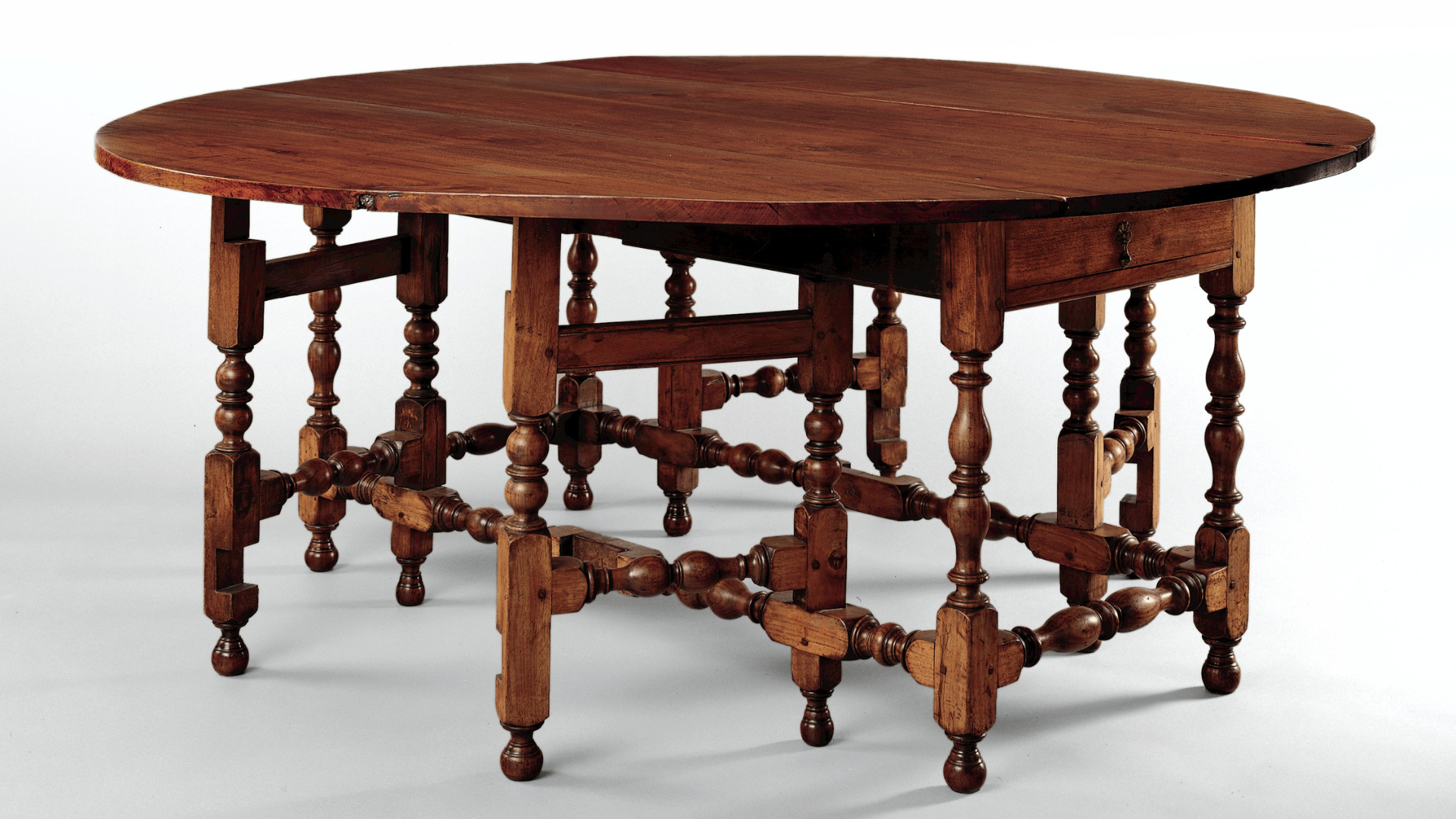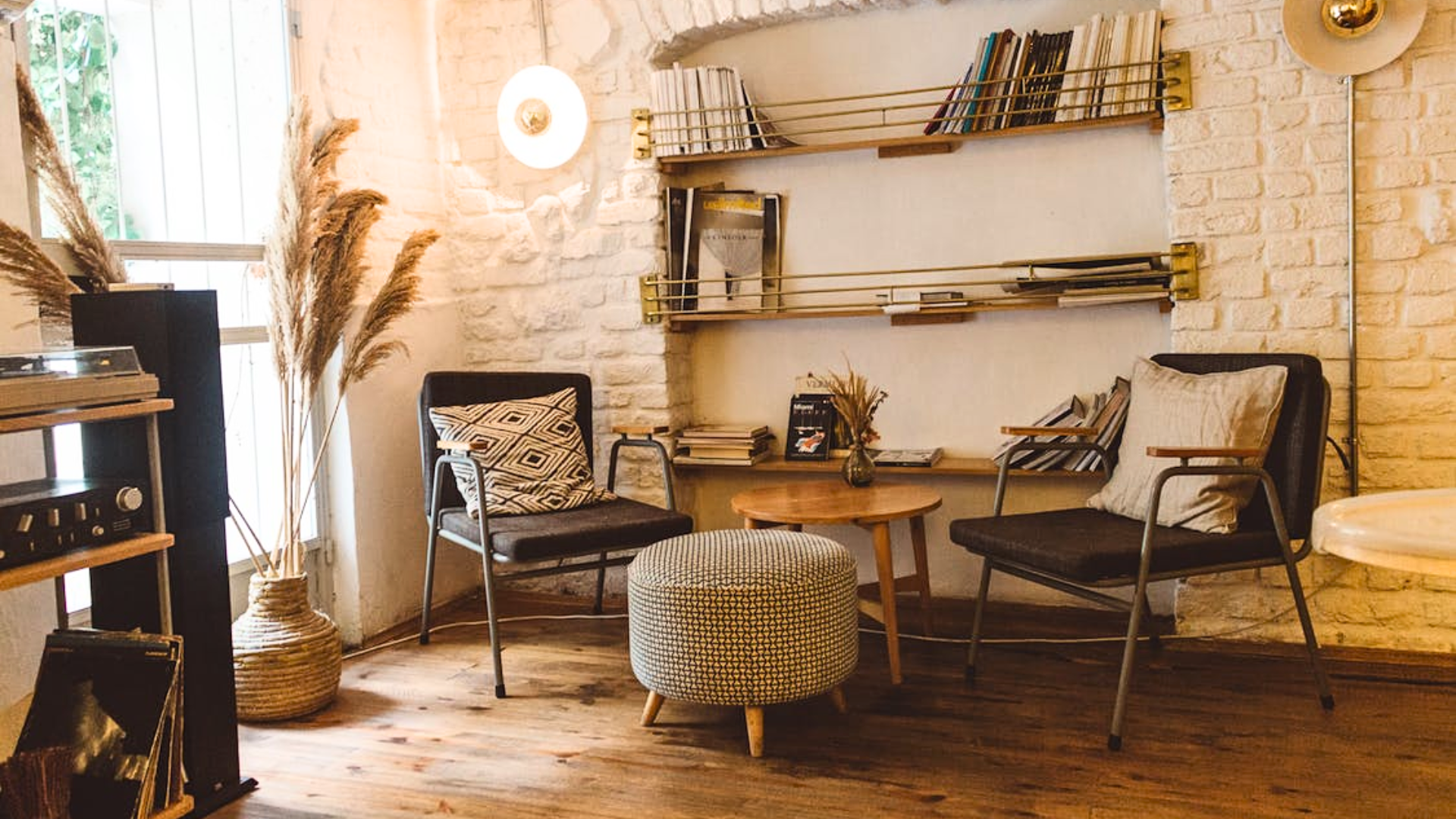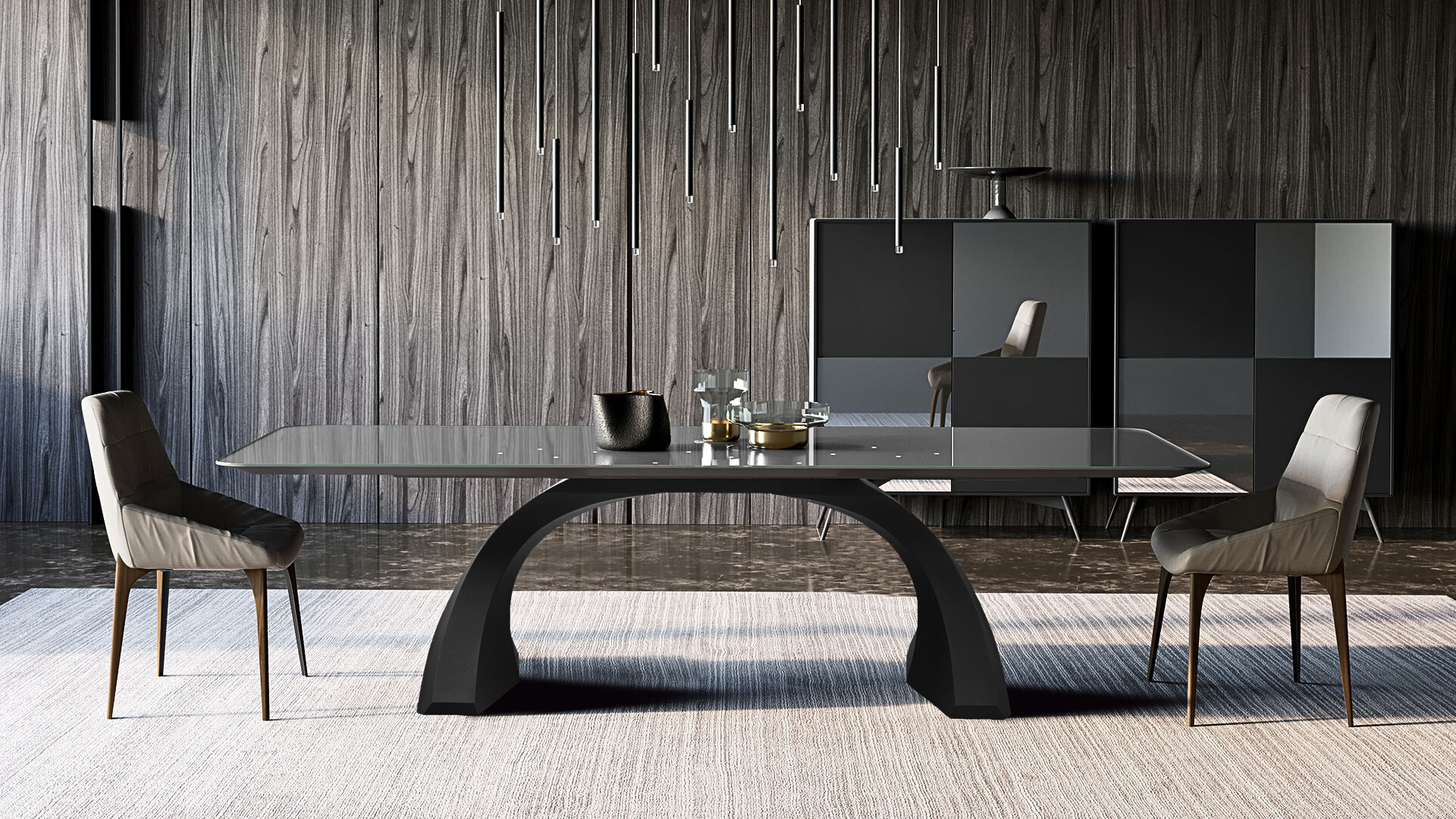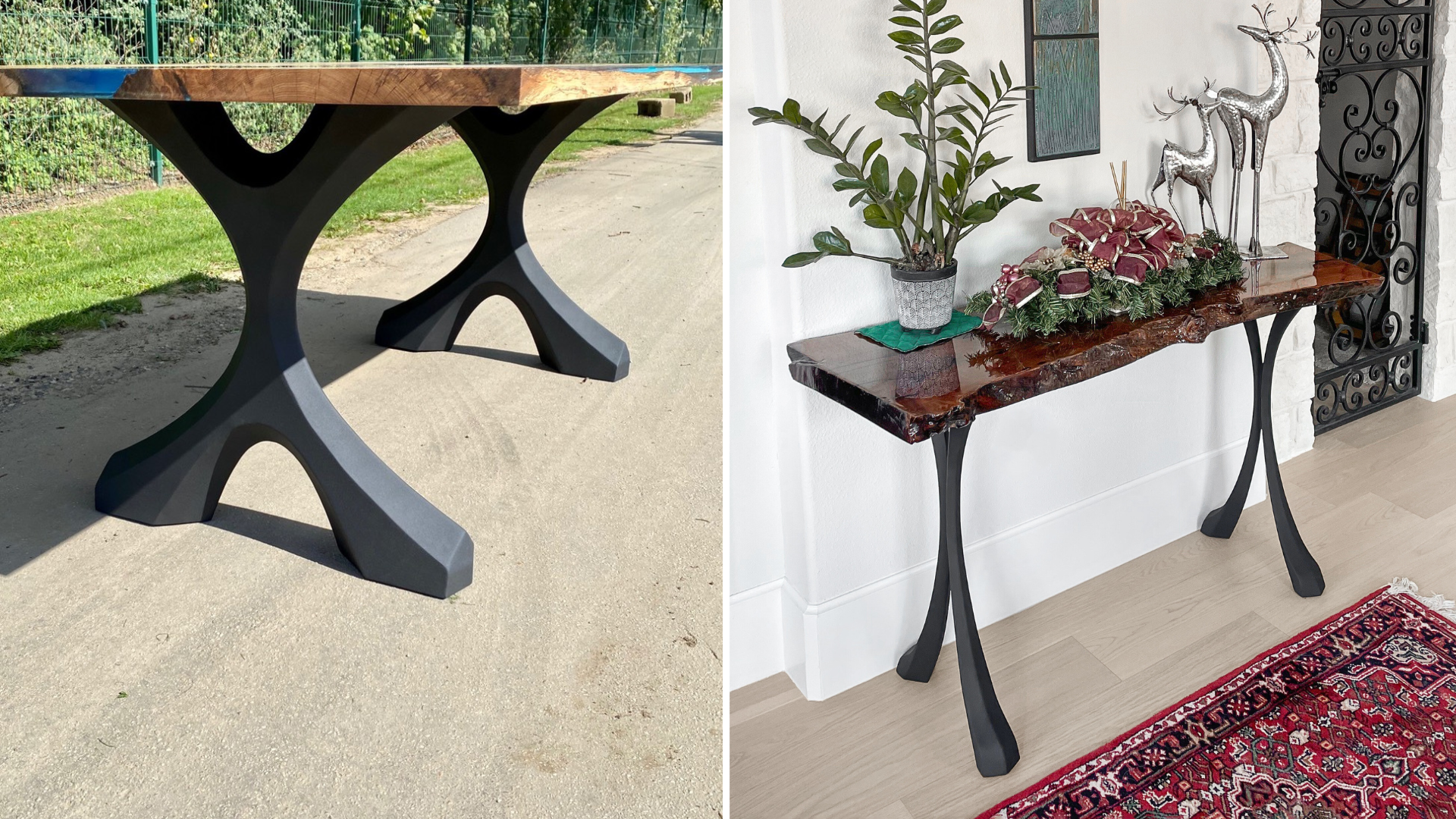Table legs are an essential part of any table. They provide support, stability, and style to the tabletop. Table legs can be made from various materials, such as wood, metal, plastic, or glass, and can have different shapes. But how did these different shaped table legs come to be? What are their origins and evolution? In this blog post, we will explore the history of the formation and development of different-shaped table legs as well as what they bring to your table project.
U - Shaped Table Legs
U-shaped table legs are table legs that have a U-shaped profile. They have two vertical sides connected by a horizontal base. U-shaped table legs are one of the oldest and most common types of table legs, as they offer a simple and sturdy structure for supporting any type of tabletop. U-shaped table legs can be traced back to ancient times when they were used for tables made from stone or wood. U-shaped table legs were also popular in medieval and Renaissance times when they were often decorated with carvings or paintings. U-shaped table legs can be made from various materials, such as wood, metal, or plastic, and can have different widths and heights, depending on the size and shape of the tabletop. U-shaped table legs are suitable for modern and minimalist styles, as they offer a sleek and smooth appearance.
Credit: Flowyline Design
Related product:
C - Shaped Table Legs
C-shaped table legs are table legs that have a C-shaped profile. This means that they have one vertical side connected by a horizontal base to another vertical side that is shorter or longer than the first one. C-shaped table legs are a relatively new and innovative type of table legs, as they offer a flexible and versatile structure for supporting any type of tabletop. C-shaped table legs can be used for various purposes, such as creating a space-saving design, allowing easy access to the tabletop, or adding some movement and dynamism to the furniture. C-shaped table legs can be made from various materials, such as metal, wood, or plastic, and can have different widths and heights, depending on the function and style of the tabletop. C-shaped table legs are suitable for contemporary and functional styles, as they offer a unique and practical appearance.
Credit: Flowyline Design
Related product:
X - Shaped Table Legs
X-shaped table legs are table legs that have an X-shaped profile. This means that they have two diagonal sides that cross each other at the center. X-shaped table legs are a classic and elegant type of table legs, as they offer a balanced and symmetrical structure for supporting any type of tabletop. X-shaped table legs can be found in many historical periods and cultures, such as ancient Rome, China, Japan, and France. X-shaped table legs were often used for tables made from wood or metal and were sometimes embellished with ornaments or motifs. X-shaped table legs can be made from various materials, such as metal, wood, or plastic, and can have different widths and heights, depending on the size and shape of the tabletop. X-shaped table legs are suitable for vintage and antique styles, as they offer a classic and refined appearance.
Credit: Flowyline Design
Related product:
L - Shaped Table Legs
L-shaped table legs are table legs that have an L-shaped profile. This means that they have two perpendicular sides connected by a corner. L-shaped table legs are a modern and functional type of table legs, as they offer a space-saving and versatile structure for supporting any type of tabletop. L-shaped table legs can be used for various purposes, such as creating a corner desk, a dining nook, or a console table. L-shaped table legs can be made from various materials, such as metal, wood, or plastic, and can have different widths and heights, depending on the size and shape of the tabletop. L-shaped table legs are suitable for contemporary and minimalist styles, as they offer a simple and sleek appearance.
Credit: Flowyline Design
Related product:
V - Shaped Table Legs
V-shaped table legs are table legs that have a V-shaped profile. This means they have two diagonal sides that meet at a point. V-shaped table legs are an elegant and artistic type of table legs, as they offer a symmetrical and balanced structure for supporting any type of tabletop. V-shaped table legs can be used for various purposes, such as creating a focal point, a contrast, or a movement in your furniture. V-shaped table legs can be made from various materials, such as metal, wood, or plastic, and can have different widths and heights, depending on the size and shape of the tabletop. V-shaped table legs are suitable for vintage and rustic styles, as they offer a classic and refined appearance.
Credit: Lisa Fotios; Flowyline Design
Related product:T - Shaped Table Legs
T-shaped table legs are table legs that have a T-shaped profile. They have one vertical side connected by a horizontal base to another vertical side that is shorter or longer than the first one. T-shaped table legs are a modern and industrial type of table legs, as they offer a sturdy and simple structure for supporting any type of tabletop. T-shaped table legs can be used for various purposes, such as creating a modular design, allowing easy assembly and disassembly, or adding some contrast and interest to the furniture. T-shaped table legs can be made from various materials, such as metal, wood, or plastic, and can have different widths and heights, depending on the size and shape of the tabletop. T-shaped table legs are suitable for contemporary and minimalist styles, as they offer a clean and geometric appearance.
T-shaped table legs can be traced back to the early 20th century when they were used for tables made from metal or wood. T-shaped table legs were often used for office furniture, such as desks or conference tables, as they provided stability and flexibility for different configurations. T-shaped table legs were also used for dining tables or coffee tables, as they created a sleek and modern look. T-shaped table legs became more popular in the late 20th century and early 21st century when they were used for tables made from glass or epoxy resin. T-shaped table legs were also used for tables that featured different shapes or designs, such as round, oval, or irregular.
Credit: Flowyline Design
Related product:H - Shaped Table Legs
H-shaped table legs are table legs that have an H-shaped profile. They have two vertical sides connected by a horizontal base. H-shaped table legs are a classic and versatile type of table legs, as they offer a symmetrical and balanced structure for supporting any type of tabletop. H-shaped table legs can be used for various purposes, such as creating a solid design, allowing easy access to the tabletop from both sides, or adding some harmony and proportion to the furniture. H-shaped table legs can be made from various materials, such as wood, metal, or plastic, and can have different widths and heights, depending on the size and shape of the tabletop. H-shaped table legs are suitable for traditional and rustic styles, as they offer a sturdy and solid appearance.
Credit: Flowyline Design
Related product:
H-shaped table legs can be found in many historical periods and cultures, as they were often used for tables made from wood or metal. One of the earliest examples of H-shaped table legs is the trestle table, which was a common type of table in medieval Europe. A trestle table consisted of a long wooden board supported by two or more trestles, which were wooden frames with H-shaped legs. Trestle tables were easy to assemble and disassemble, making them convenient for temporary use in banquets, feasts, or markets.
Another example of H-shaped table legs is the gateleg table, which was a popular type of table in the 16th and 17th centuries. A gateleg table consisted of a rectangular or oval tabletop with two drop leaves that could be folded down when not in use. The drop leaves were supported by swing-out legs that were attached to a fixed leg with hinges. The fixed leg had an H-shaped profile, while the swing-out legs had a V or X-shaped profile. Gateleg tables were ideal for small spaces, as they could be expanded or contracted according to the need.

Credit: Russell Sage
A more modern example of H-shaped table legs is the Eames molded plywood coffee table, which was designed by Charles and Ray Eames in 1946. The Eames molded plywood coffee table consisted of a round or rectangular plywood tabletop with four slender metal legs that had an H-shaped profile. The metal legs were attached to the plywood tabletop with rubber shock mounts that allowed for some flexibility and movement. The Eames molded plywood coffee table was a revolutionary product that combined innovative technology with elegant design.

Credit: Emre Can Acer
Table legs are more than just functional supports for furniture. They are also expressions of art, culture, and taste. Throughout history, table leg shapes have evolved from simple and sturdy to elaborate and elegant, reflecting the changing styles and preferences of different periods and regions. From the ancient Egyptian, Greek, and Roman civilizations to the medieval, Renaissance, and Baroque eras, table leg shapes have been influenced by various factors such as materials, techniques, motifs, and symbols. In modern times, table leg shapes have become more diverse and creative, incorporating elements from different genres and movements such as Art Nouveau, Art Deco, Bauhaus, and Minimalism. Table leg shapes are not only a fascinating topic to explore, but also a way to appreciate the beauty and diversity of human creativity.








